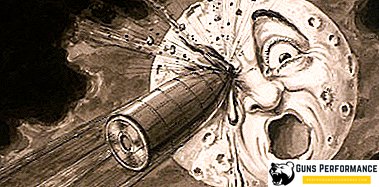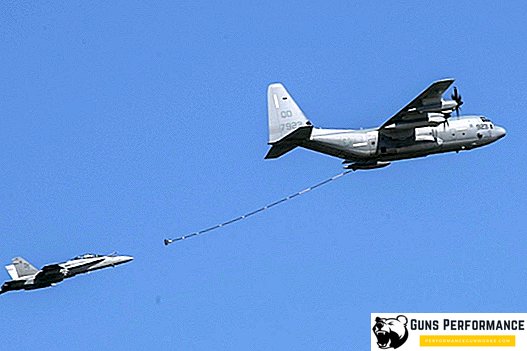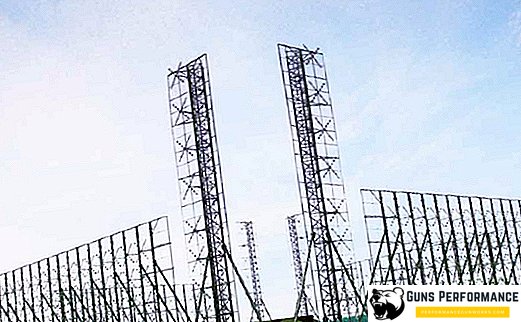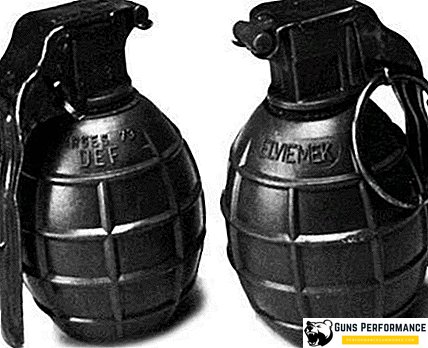
The presentation of the newest Russian cruise missile 3M22 Zirkon on March 17, 2016, despite the silence of most media, did not go unnoticed by the expert community and the military. Immediately appeared assumptions about the tactical and technical characteristics of the new offspring of Rosoboronprom. Preliminary test data gave reason to believe that an entirely new and powerful weapon could soon be adopted by the Russian Navy and naval aviation. These missiles are supposed to re-equip the Orlan TARKR project 1144, to equip the Leader project cruisers under construction and the Husky submarines.
The history of the new rocket
The data obtained during the tests show that the Russian defense industry managed to create a combat cruise missile that reached hypersonic speed (5-6 times higher than the speed of sound). Hypersonic cruise missile 3M22 "Zircon" turns modern air defense systems into a pile of unnecessary trash.
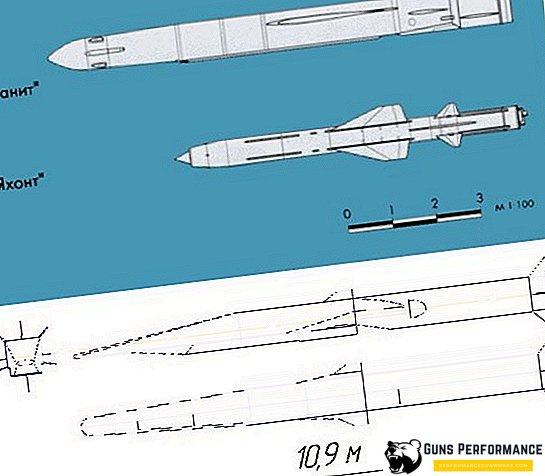
The emergence of the newest super-weapon has its own background, consisting of a chain of important facts. Work on the creation of a rocket capable of flying at hypersonic speeds, were carried out in the USSR in the mid 70s. As early as the 1970s, the Dubna Design Bureau "Raduga" developed the X-90 cruise missile, which can reach speeds of up to 3-4 M in flight. However, with the collapse of the Union due to lack of funding, the work was curtailed. Only 20 years later, they again returned to this topic, but on the basis of new technologies.
The first information about the development of a new anti-ship complex equipped with cruise tactical missiles appeared at the end of 2011.
The development of a prototype hypersonic rocket was developed by the Central Institute of Aviation Motors (CIAM) in the city of Lytkarino, Moscow Region.
The RCC model presented on the exhibition stands was strikingly different in its shape from the usual cigar-shaped cruise missiles. He was a box-shaped body with a flattened spade fairing. At the air show, the name of the unusual Zircon rocket complex was announced for the first time.
In parallel, the latest radio altimeter and automatic radio compass were developed. Scientific-production enterprise "Granit-Electron" actively engaged in the creation of navigation equipment and autopilot systems.
The leading enterprise of the Strela production company, which manufactures the Onyx anti-ship attack systems, announced the start of preparation of the production base for the production of the newest cruise missile. According to many sources, the newest weapon system can drastically change the situation at sea. However, after the MAKS air show, almost all of the information about progress on the Zircon theme disappeared from public information resources.
Scant information leaked to the media was clearly insufficient. And only on the scale of involvement in the Zircon project of the largest specialized enterprises could one judge the properties of this project.
What surprised the world
After the first tests, it became clear that the new missile is able to fly two times faster than the newest British sea-based cruise missile Sea Ceptor. The antimissiles that are currently in service with NATO fleets are capable of successfully fighting the Granit anti-ship missiles and similar aircrafts, whose speed reaches 2000-2500 km / h. Western countermeasures are powerless against the latest Russian design. The flight range of the Russian anti-ship missile missile will be approximately 300-400 km, which is quite enough for the effective destruction of ships outside the zone of establishing radio contact.
As it later became known, the Zirkon missiles became a modernized version of the Indian sea-based cruise missile Bramos, which was jointly created by the two countries. The basis for the development of new weapons became anti-ship complex P-800 "Onyx". The emphasis in the development of the rocket was placed on its high speed. According to experts, the new generation of high-speed anti-ship missiles are a big problem for air defense systems. There is very little time to detect a projectile flying toward a target in order not only to qualify the type of threat, but also to take adequate countermeasures.
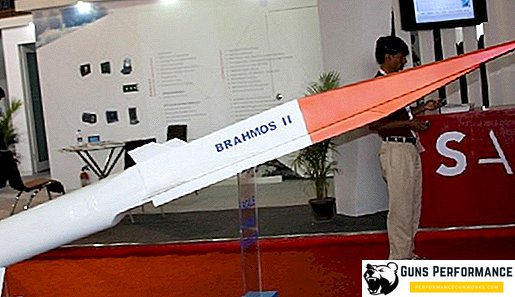
Project 1144 Russian nuclear cruisers, re-equipped with the newest cruise missiles, will again become a real threat to the dominion of the American fleet on the seas. Initially it is planned to equip the Admiral Nakhimov modernized TARKR with new missile systems. Later the same fate awaits the flagship of the Northern Fleet TARKR "Peter the Great". There are plans to build atomic shock submarines of the Husky type, armed with hypersonic cruise missiles, which will drastically shift the balance of world naval forces towards the Russian fleet.
The main technical subtleties and nuances in creating a new generation of rocket
The need for a new anti-ship missile did not arise immediately. The P-600 Granit and P-800 Onyx missile systems that are in service with the fleet continue to be a formidable force today. However, do not spend time in vain and the developers of ultra-modern means of ship defense. According to experts in the field of operational-tactical weapons, in a couple of years the combat capabilities of sea-based cruise missiles will be exhausted due to the effectiveness of the antimissile defense of ships.

In this connection, the idea arose of a substantial modernization of the Russian Navy with new types of weapons. One of the areas of the process was the development of a new anti-ship complex with high-speed cruise missiles. The presence of such weapons on large and small ships of the fleet will be an effective deterrent at sea. The new 3M22 missile has unique tactical and technical characteristics, but there is no exact data about them yet. Even preliminary data say that new weapons are a serious step towards the emergence of new types and types of weapons.
Why is the new Russian rocket called hypersonic? The fact is that today attack rockets have an average flight speed of 2-2.5 MAX. New development should fly at a speed of at least 4500 km / h, exceeding 5-6 times the sound barrier. Create such a rapid projectile - not an easy task. Even at the project stage, difficulties arose in how to achieve the necessary acceleration of the rocket. The use of traditional rocket engines for this purpose should have no effect.
Devices flying at supersonic speeds are fundamentally different from devices flying at hypersonic speeds. A conventional turbojet engine loses traction after triple speeding is the main indicator of the efficiency of an aircraft engine. For this type of weapons, like cruise missiles, neither liquid nor solid propellant jet engines are suitable. During the flight, the rocket performs certain evolutions that cannot be achieved by operating sustained rocket engines and turbojet engines with constant thrust.
The result of scientific and technical searches was a direct-flow rocket engine capable of operating in supersonic burning conditions. For these purposes, even a new type of rocket fuel "Deciling-M" with increased energy intensity was developed.
During the flight of the rocket in the air space at a height of 50-200 meters, the shell of the projectile is heated to high temperatures, therefore, new heat-resistant alloys were used in the manufacture of the product.
For reference: The first American hypersonic aircraft "Valkyrie" developed a speed of up to 3200 km / h. Airplane glider was made of titanium. To use such an expensive metal for mass production of rockets was inexpedient and expensive.
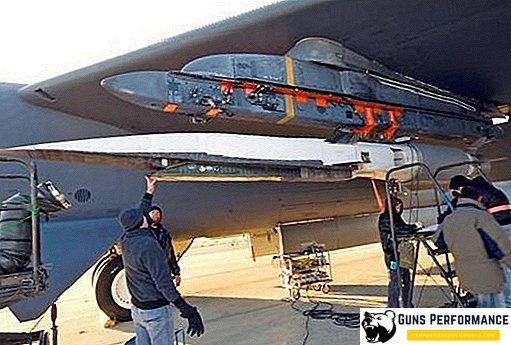
It was equally difficult to solve the problem of missile homing at high speeds. Unlike well-known aeroballistic combat systems capable of flying at hypersonic speeds and at altitudes up to 100 km, the cruise missile has a different scope. The main flight of the rocket occurs in the dense layers of the atmosphere. Unlike ballistic missiles, the KR has a gentle flight trajectory and a shorter range. All of these requirements pose new challenges for weapons developers.
In flight at hypersonic speed due to the occurrence of a plasma cloud around a flying projectile, a natural distortion of the target designation parameters appears. On the new rocket, it was decided to install the perfect electronic equipment that can lead the projectile to the target at high speed, despite the opposition of powerful electromagnetic fields.
Plans of the Supreme Naval leadership regarding the combat capabilities of the new missile
For the first time the rocket was launched on the flight test ground in Aktyubinsk in 2012. The launch was carried out from the side of the Tu-22M3 strategic missile carrier. Further launches were carried out from ground launchers. The complex of basic tests is coming to an end. There are still flaws in the work of the propulsion system and guidance system, but this, according to the creators of the rocket, can be eliminated in the near future. There is a preparation for launching a new weapon in the series.
The supreme naval command believes that one TARKR "Peter the Great", armed with hypersonic anti-ship missiles "Zircon", will be able alone to withstand the whole combat formation of ships of a potential enemy. In coastal maritime theaters, Russian warships of small and middle class, equipped with the latest rocket, will be able to control the entire water area. In terms of the range and speed of the Russian rocket, there are no analogues either in the Turkish Navy or in the fleets of the Baltic Sea countries.
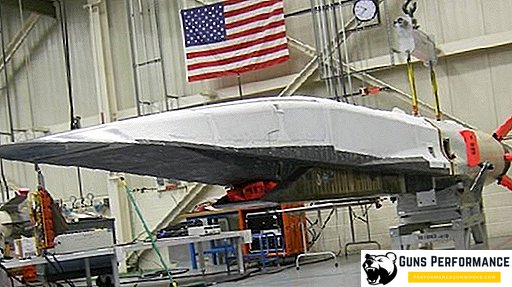
The situation is similar with the re-equipment of ships of the Pacific Fleet. New weapons significantly enhance the operational and tactical capabilities of the Pacific Fleet ships in the Pacific. This will in some way create a reliable base for strengthening the defense capability of the Far Eastern borders in front of a real threat.
Finally
The latest developments of Russian designers have stumped the defense departments of the United States, Great Britain and China, which assess the appearance of the latest hypersonic missile as a potential threat to its naval forces. To date, the technical equipment of the Russian fleet with operational-tactical weapons is in a satisfied state, however, constant technological progress leads to the rapid obsolescence of the combat potential of the modern fleet. Yesterday, the powerful Granit cruise missiles frightened the American admirals, but today the missile armament of Russian ships is in need of improvement.
The hypersonic cruise missile "Zircon" in its parameters is well ahead of its time. The technologies that formed the design of the industrial design, for years ahead of the technological level of weapons and equipment of the fleet. New submarines, designed in the Malachite design bureau, are being developed as combat platforms for a new generation of weapons.
Do not overlook the fact that the new frigates and corvettes, which today represent the basis of the Russian Navy, will be further armed with hypersonic missiles.
In China, such developments are also moving fast. The latest Chinese anti-ship missile DF-21 with a range of up to 3000 km, can enter service with the PLA Navy for 2-3 years. Americans are trying to keep up with Russia and China, working on the X-51A X-51 Wave Rider project. This hypersonic rocket should not yield to the Russian and Chinese development.
Before the real flight of the American brainchild it did not come. China only plans to complete work by 2020. At the operational-tactical level, the Russian hypersonic rocket already has real outlines in the metal, has been tested and is being prepared for serial production. What will be the fate of the newest weapons, time will tell. Nevertheless, the modernization of the Russian fleet and the rearmament of ships will begin soon.


